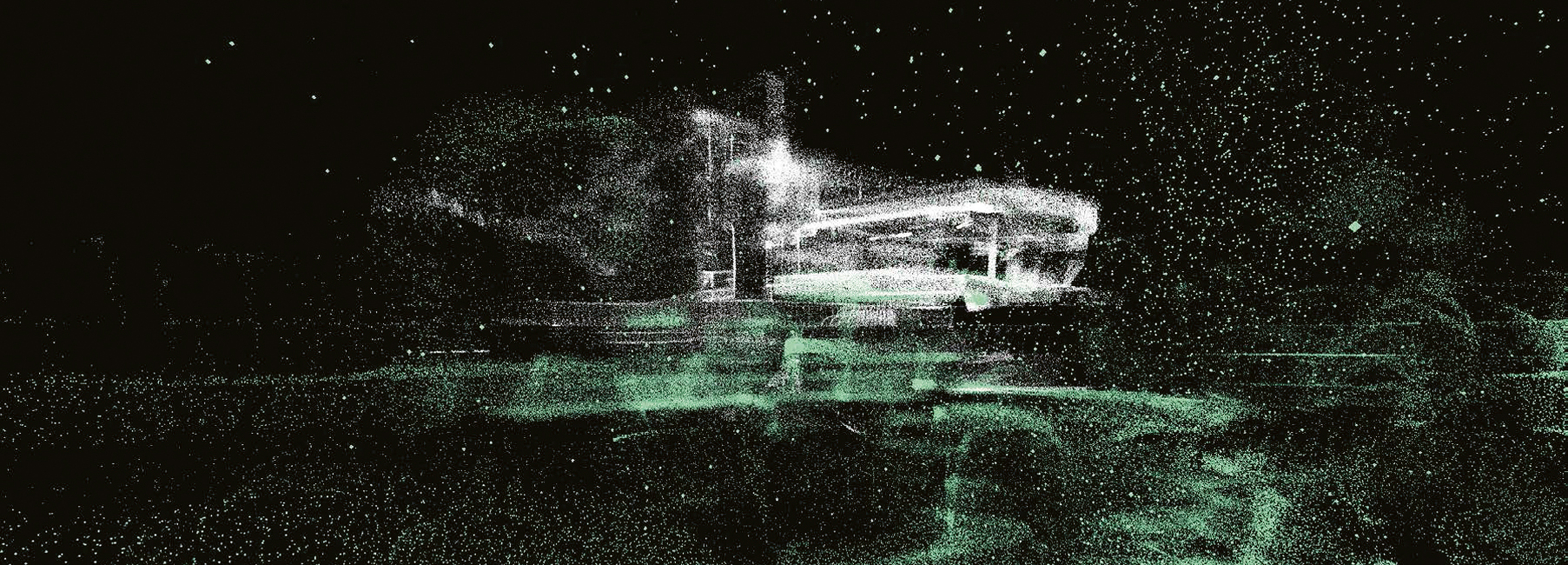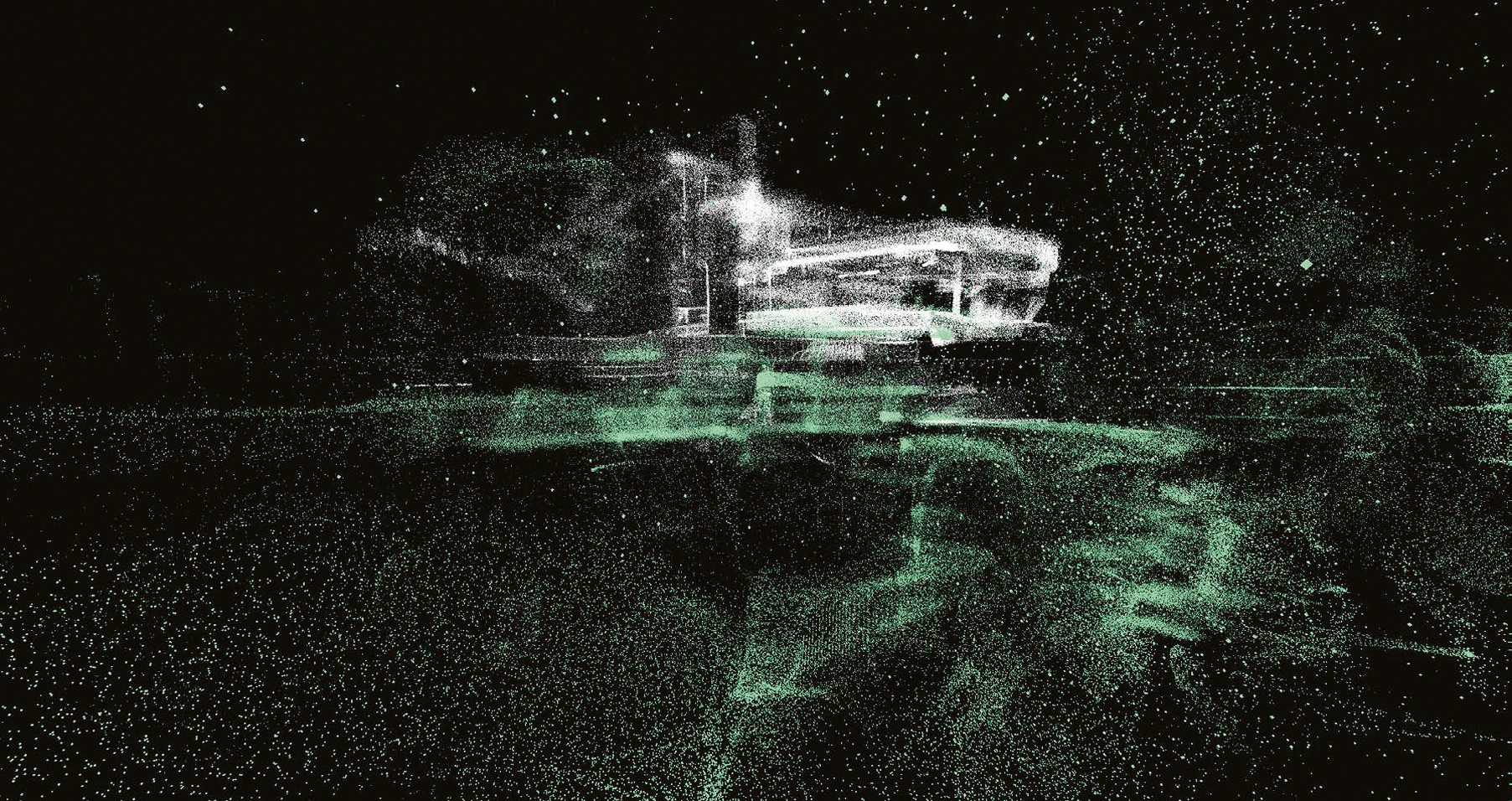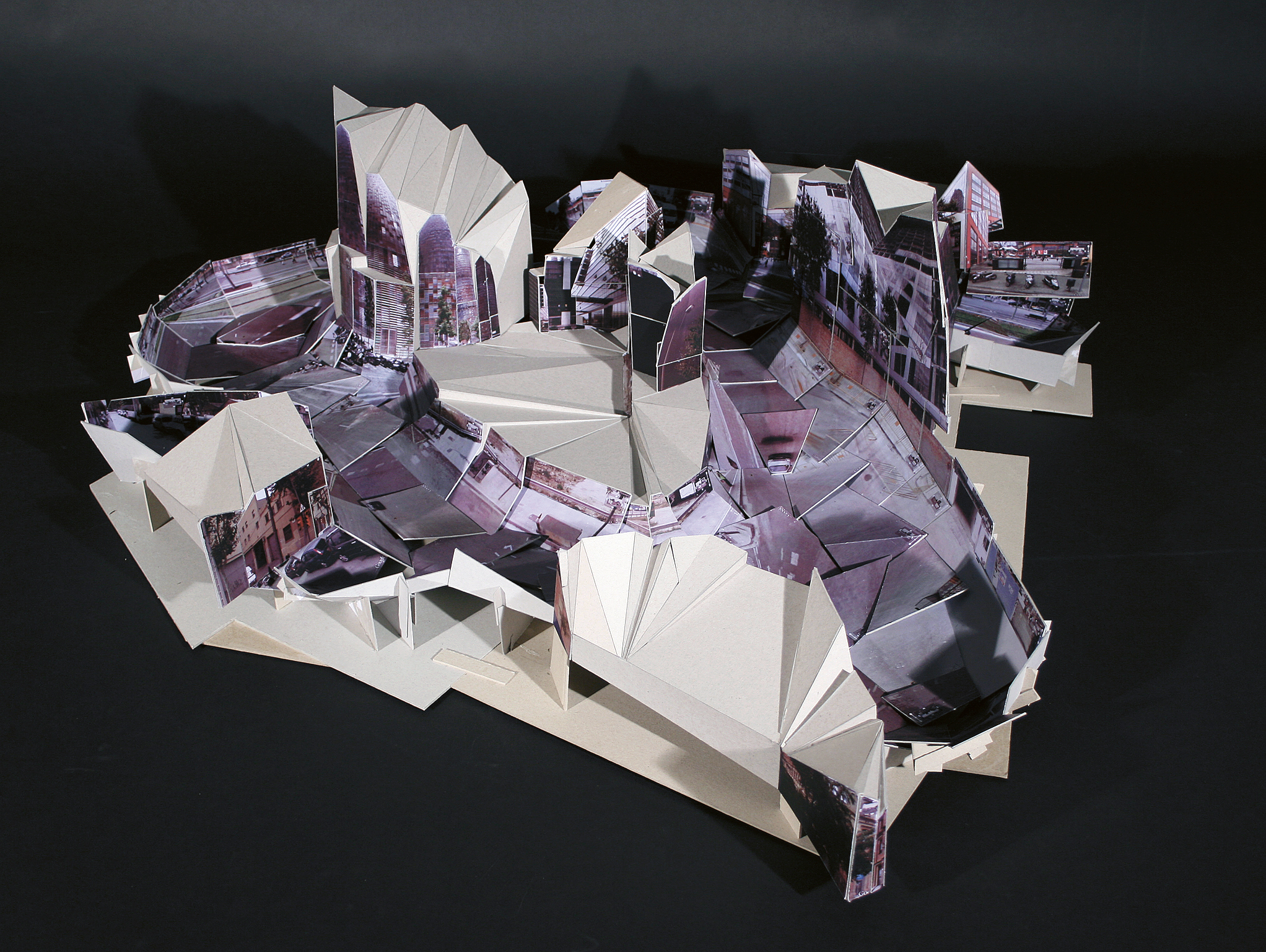Between theory and practice: Image-Based Architecture

Bild, Grafik: Hannes Hummel, House Fallingwater
The book "Image-Based Architecture. Fotografie und Entwerfen" by Philipp Reinfeld is a volume that can be classified as lying between theory and practice. Its theory-based examination of the influence and effect of digital images on architecture is supplemented with a number of project examples. In the projects, the "Raumflut" (overabundance) of everyday photographs on the internet serves as the basis for reception of and analytical work on spatial structures.
Philipp Reinfeld starts out by describing the image- reality logic transported by television and advertising and how it influences on the appearance of built reality, as in the case of football arenas (AufSchalke Arena) and the Potsdamer Platz plaza in Berlin. At the same time the advent of digital devices is transforming the very process of taking pictures into a space-defining act, one in which a spatiotemporal connection comes about between the photographer, the world and the moment of taking the picture.
Historical developments underpin the observations on the topics of perspective, camera image and spatial perception. Philipp Reinfeld also uses works by such theorists as Susan Sontag, Pierre Bourdieu, Roland Barthes and Vilém Flusser to examine the mutual influence of image and reality from differing points of view, including sociological, media theory and political perspectives.
In examining these issues Philipp Reinfeld is not concerned with pursuing the goal of determining new architectural forms but rather seeks to expand the field of customary design methodologies. Moreover, as the author states,"photography-based designing" opens up new possibilities in the area of architectural research.
"Image-Based Architecture. Fotografie und Entwerfen" is a publication by Wilhelm Fink Verlag in 2018.
Philipp Reinfeld starts out by describing the image- reality logic transported by television and advertising and how it influences on the appearance of built reality, as in the case of football arenas (AufSchalke Arena) and the Potsdamer Platz plaza in Berlin. At the same time the advent of digital devices is transforming the very process of taking pictures into a space-defining act, one in which a spatiotemporal connection comes about between the photographer, the world and the moment of taking the picture.
Historical developments underpin the observations on the topics of perspective, camera image and spatial perception. Philipp Reinfeld also uses works by such theorists as Susan Sontag, Pierre Bourdieu, Roland Barthes and Vilém Flusser to examine the mutual influence of image and reality from differing points of view, including sociological, media theory and political perspectives.
In examining these issues Philipp Reinfeld is not concerned with pursuing the goal of determining new architectural forms but rather seeks to expand the field of customary design methodologies. Moreover, as the author states,"photography-based designing" opens up new possibilities in the area of architectural research.
"Image-Based Architecture. Fotografie und Entwerfen" is a publication by Wilhelm Fink Verlag in 2018.











